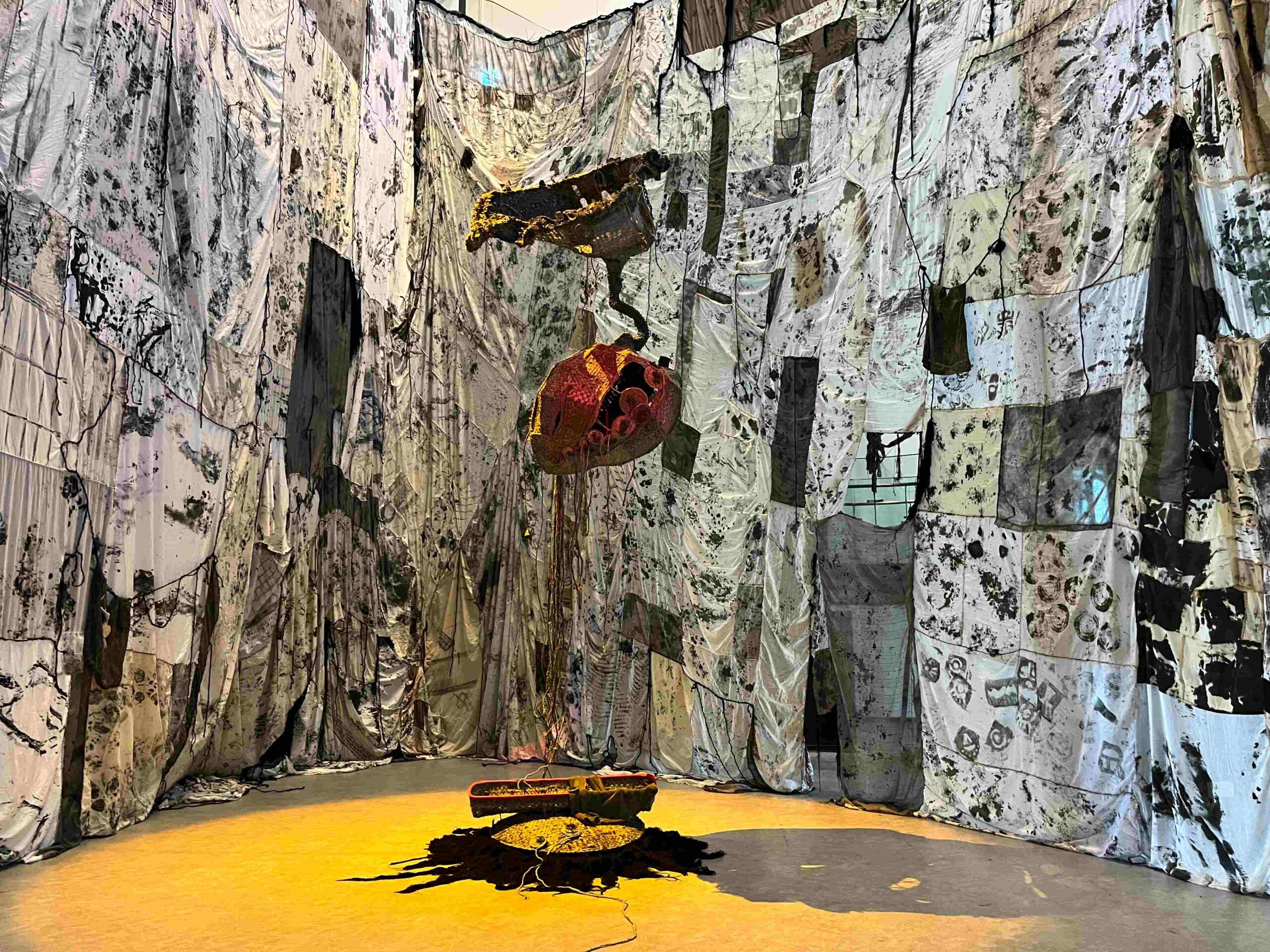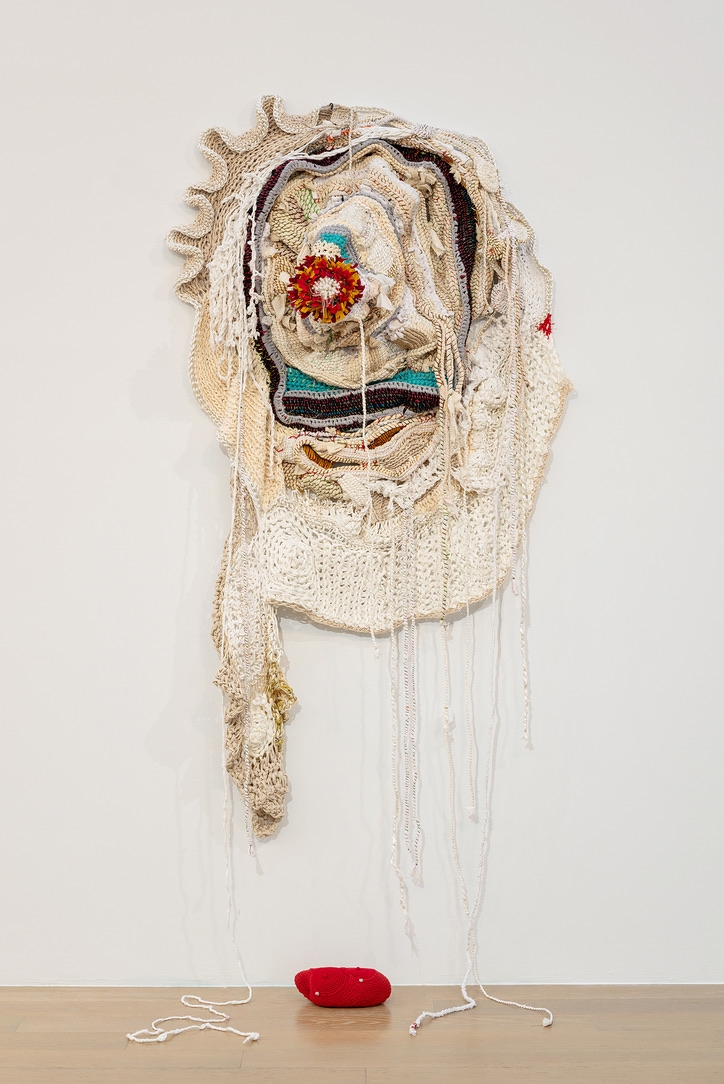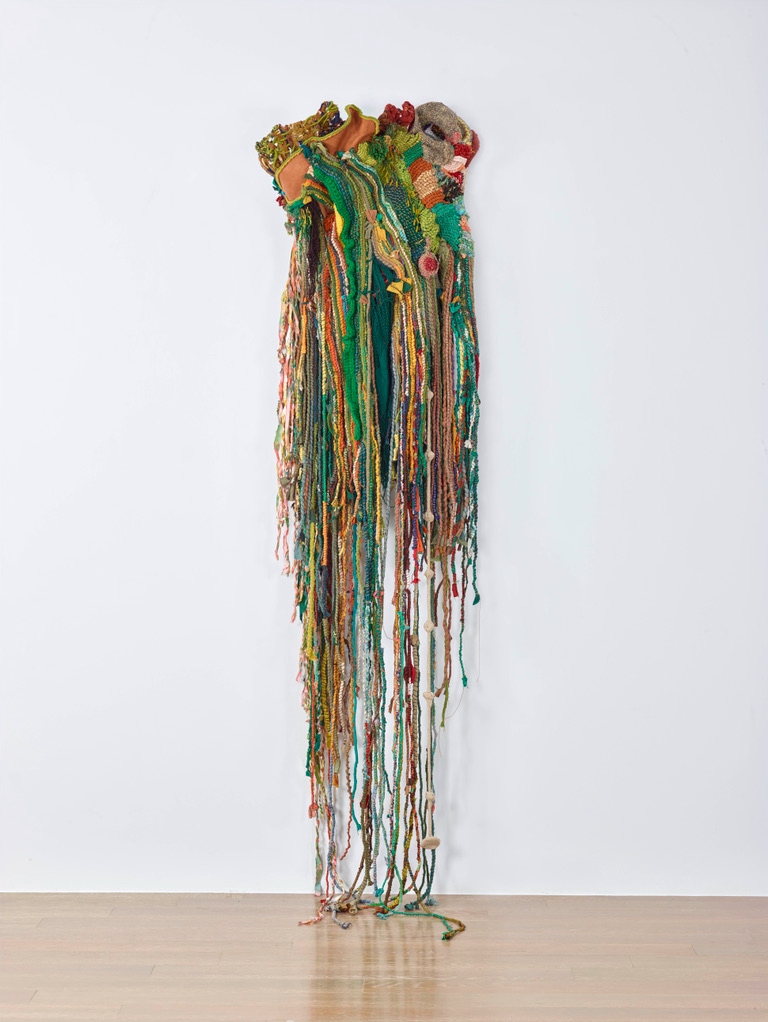Depiction:
In 2014, Aluaiy returned to the old site of the Paridrayan community, which she had left after Typhoon Morakot (August 2009), and began working on her Rubbings series. While touching the stone walls built by her ancestors, she happened to see a plant sprouting through a crack, which showed her that even though her people no longer reside here, life and spirits still thrive and remain connected. From the rocks, vegetation, cloth fragments, and charcoal in the stone walls of the homes, the history that she has created rubbings and paintings of has allowed her to hear nature comforting grieving, frail souls. Meanwhile, she is the sprout who has found the power and direction to continue living. Before a Paiwan ritual, millet stalks are lit to produce smoke (cevulj), which is used to transmit messages between the human and spirit world. For instance, during a murialjak (a ritual for newborns), smoke brings the blessings of the ancestors to the child, allowing their spirits and power to continue within the body, mind, and spirit of the new arrivalto make him/her truly human.
Being from a mamazangiljan family (core of the tribe) and a Christian, Aluaiy is always thinking about the conflict between her traditional culture and her faith, along with the issues of cultural breakdown, loss of land, and the dispersion of her people from their home village. In Cevulj, Path of a Family, which is part of her Rubbings series, her pigments come from sediment and ash from burnt vegetation from the old village, and are combined with rubbings and weaving to depict the spiritual significance of smoke (a symbol of ritual, her home village, and the Holy Spirit in the Bible), serving as a witness of existence and pointing the way home for her people and their souls.



